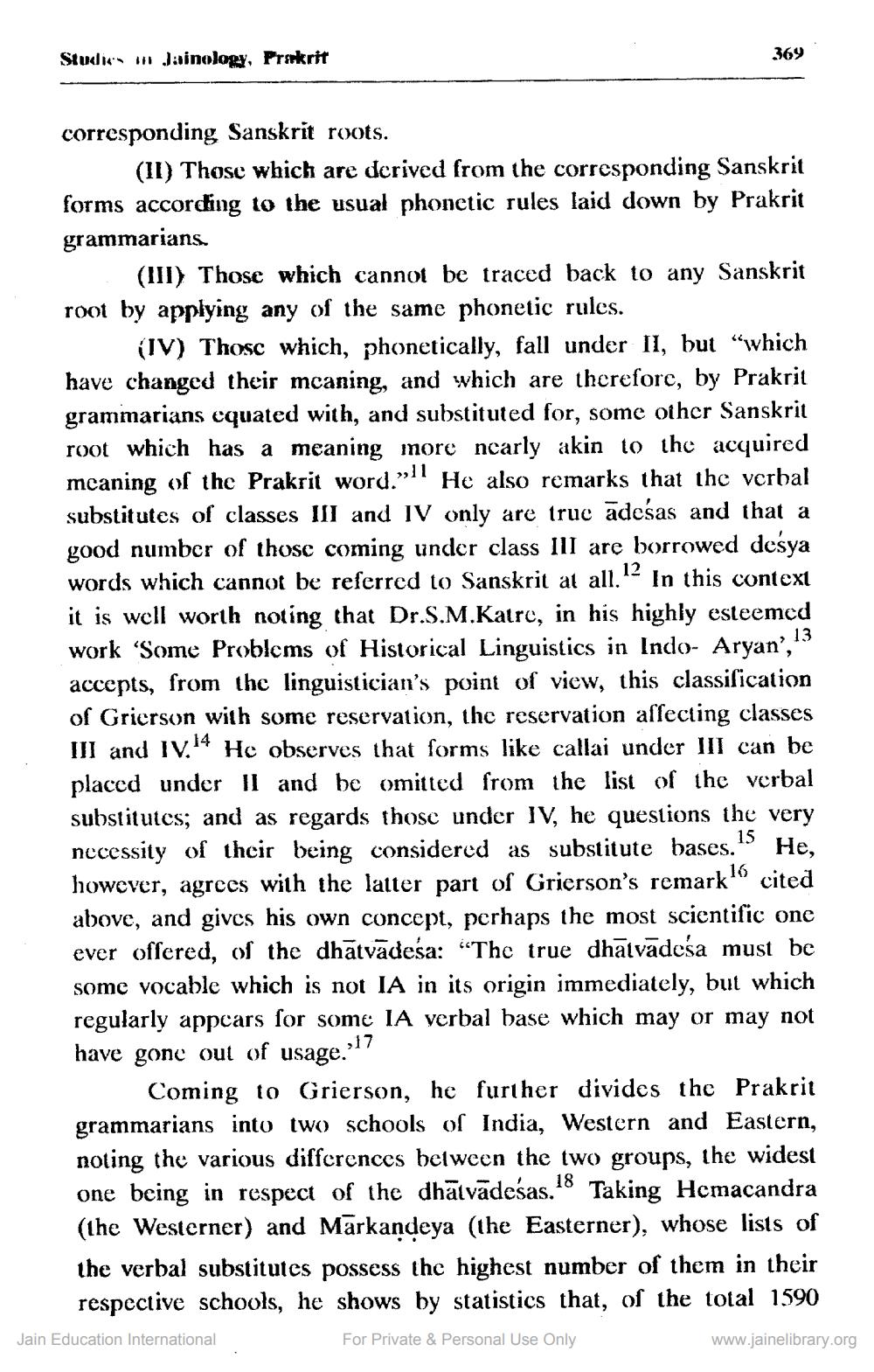________________
Studies in Jainology, Prakrit
369
corresponding Sanskrit roots.
(II) Those which are derived from the corresponding Sanskrit forms according to the usual phonetic rules laid down by Prakrit grammarians.
. (III) Those which cannot be traced back to any Sanskrit root by applying any of the same phonetic rules.
(IV) Thosc which, phonetically, fall under II, but “which have changed their mcaning, and which are therefore, by Prakrit grammarians equated with, and substituted for, some other Sanskrit root which has a meaning more nearly akin to the acquired meaning of the Prakrit word.” He also remarks that the verbal substitutes of classes III and IV only are truc ādesas and that a good number of those coming under class III are borrowed desya words which cannot be referred to Sanskrit at all. In this context it is well worth noting that Dr.S.M.Katre, in his highly esteemed work 'Some Problems of Historical Linguistics in Indo- Aryan','3 accepts, from the linguistician's point of view, this classification of Grierson with some reservation, the reservation assecting classes III and IV.14 He observes that forms like callai under III can be placed under ll and be omitted from the list of the verbal substitutes; and as regards those under IV, he questions the very necessity of their being considered as substitute bases. He, however, agrees with the latter part of Grierson's remarkt" cited above, and gives his own concept, perhaps the most scientific one ever offered, of the dhatvadesa: “The true dhālvādesa must be some vocable which is not IA in its origin immediately, but which regularly appcars for some IA verbal base which may or may not have gone out of usage.”
Coming to Grierson, he further divides the Prakrit grammarians into two schools of India, Western and Eastern, noting the various differences between the two groups, the widest one being in respect of the dhālvādesas.18 Taking Hemacandra (the Westerner) and Markandeya (the Easterner), whose lists of the verbal substitutes possess the highest number of them in their
respective schools, he shows by statistics that, of the total 1590 Jain Education International For Private & Personal Use Only
www.jainelibrary.org




